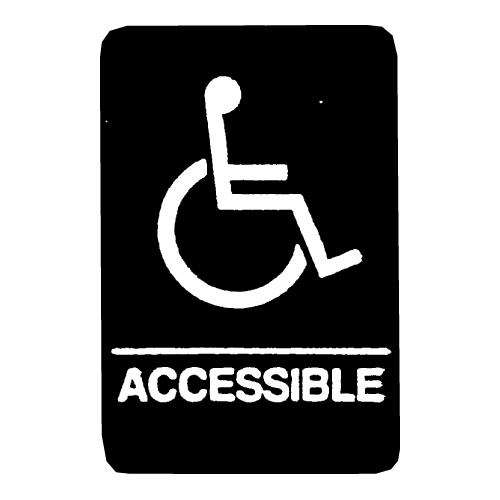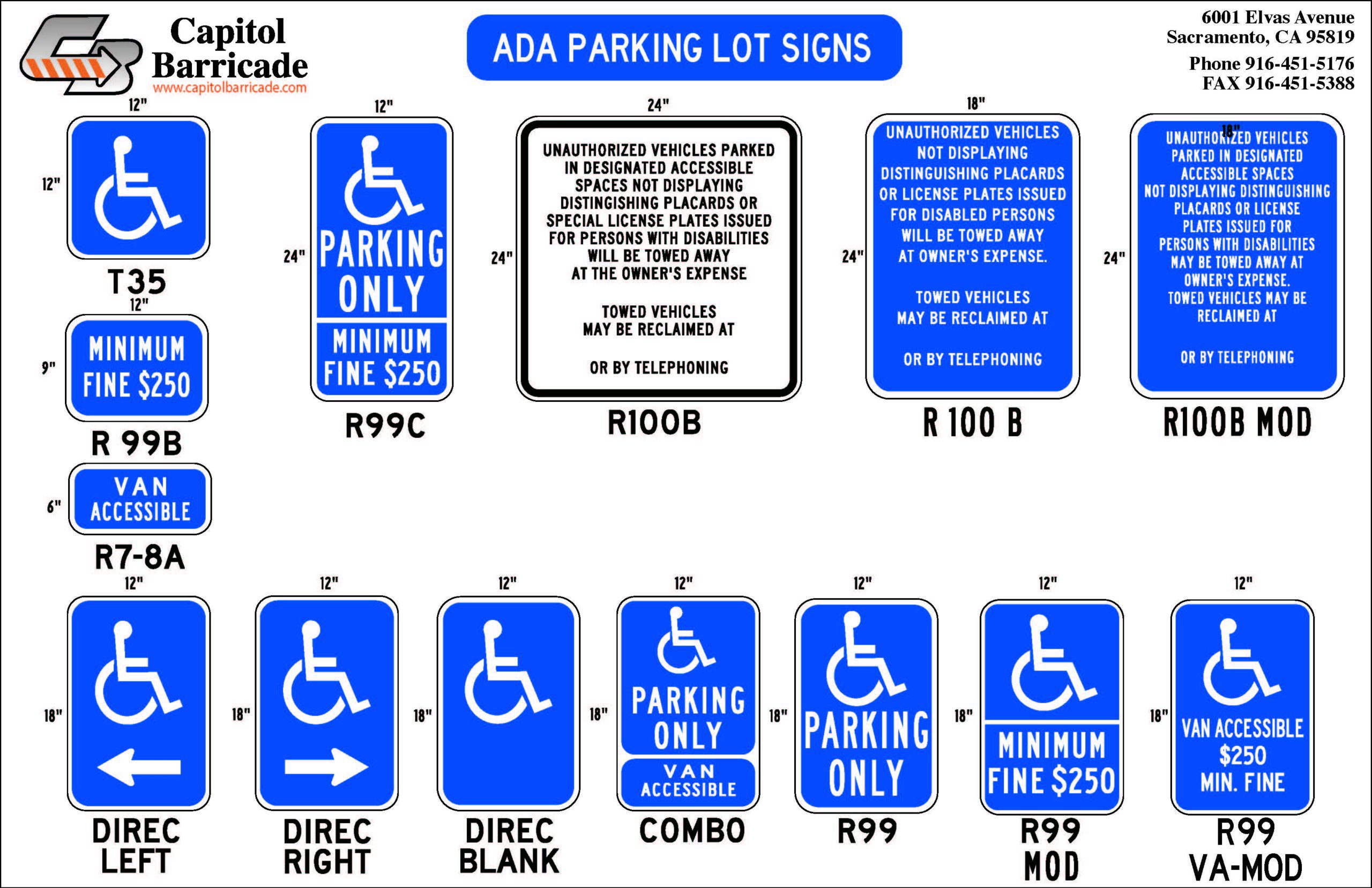Exploring Creative Designs for Effective ADA Signs
Exploring Creative Designs for Effective ADA Signs
Blog Article
Exploring the Key Features of ADA Indicators for Enhanced Accessibility
In the realm of accessibility, ADA indications offer as silent yet powerful allies, ensuring that areas are accessible and inclusive for individuals with specials needs. By incorporating Braille and tactile components, these indications break barriers for the aesthetically damaged, while high-contrast color schemes and readable fonts cater to diverse aesthetic requirements.
Relevance of ADA Conformity
Guaranteeing conformity with the Americans with Disabilities Act (ADA) is critical for promoting inclusivity and equivalent access in public areas and offices. The ADA, established in 1990, mandates that all public facilities, companies, and transport solutions suit people with impairments, ensuring they take pleasure in the same legal rights and possibilities as others. Compliance with ADA requirements not only satisfies lawful obligations but likewise boosts an organization's credibility by showing its dedication to variety and inclusivity.
One of the crucial aspects of ADA compliance is the implementation of obtainable signs. ADA indications are designed to make certain that individuals with handicaps can quickly navigate via rooms and structures.
Furthermore, adhering to ADA laws can alleviate the risk of prospective penalties and lawful repercussions. Organizations that fall short to abide by ADA standards may encounter suits or penalties, which can be both damaging and monetarily difficult to their public image. Therefore, ADA conformity is essential to cultivating an equitable setting for everyone.
Braille and Tactile Aspects
The incorporation of Braille and responsive elements into ADA signs embodies the principles of accessibility and inclusivity. These functions are essential for people that are blind or visually damaged, enabling them to browse public rooms with higher independence and confidence. Braille, a responsive writing system, is essential in offering created information in a format that can be quickly regarded with touch. It is typically put underneath the corresponding message on signs to guarantee that people can access the info without aesthetic help.
Responsive components expand past Braille and include increased characters and symbols. These parts are created to be noticeable by touch, enabling individuals to identify area numbers, toilets, departures, and other crucial locations. The ADA sets specific standards pertaining to the size, spacing, and positioning of these tactile elements to enhance readability and guarantee consistency throughout different environments.

High-Contrast Shade Systems
High-contrast color design play an essential role in enhancing the presence and readability of ADA signage for people with aesthetic impairments. These systems are vital as they optimize the difference in light reflectance in between message and background, making certain that signs are easily discernible, also from a distance. The Americans with Disabilities Act (ADA) mandates the usage of particular shade contrasts to accommodate those with minimal vision, making it an important facet of compliance.
The efficiency of high-contrast colors depends on their ability to attract attention in various illumination conditions, consisting of dimly lit atmospheres and areas with glow. Normally, dark text on a light history or light message on a dark background is used to achieve ideal comparison. For instance, black text on a yellow or white history offers a plain aesthetic difference that aids in fast acknowledgment and comprehension.

Legible Fonts and Text Dimension
When thinking about the style of ADA signage, the choice of legible typefaces and ideal text dimension can not be overemphasized. The Americans with Disabilities Act (ADA) mandates that font styles should be sans-serif and not italic, oblique, script, very attractive, or of uncommon type.
The size of the message additionally plays a crucial duty in access. According to ADA standards, the minimum text elevation need to be 5/8 inch, and it must enhance proportionally with seeing distance. This is specifically important in public rooms where signage demands to be checked out rapidly and accurately. Consistency you can try here in message dimension adds to a cohesive visual experience, aiding individuals in navigating atmospheres successfully.
In addition, spacing in between letters and lines is integral to legibility. Sufficient spacing protects against characters from showing up crowded, enhancing readability. By adhering to these criteria, designers can dramatically enhance accessibility, making sure that signs serves its designated objective for go to this website all individuals, no matter of their visual abilities.
Effective Placement Approaches
Strategic placement of ADA signs is crucial for optimizing ease of access and making certain compliance with lawful criteria. ADA standards stipulate that indicators need to be installed at a height between 48 to 60 inches from the ground to guarantee they are within the line of sight for both standing and seated individuals.
In addition, indicators need to be put surrounding to the latch side of doors to allow simple identification prior to entrance. Uniformity in indication positioning throughout a facility enhances predictability, lowering confusion and boosting overall customer experience.

Conclusion
ADA signs play an essential duty in advertising access by incorporating attributes that resolve the needs of individuals with disabilities. These elements jointly cultivate a comprehensive setting, emphasizing the importance of ADA conformity in making certain equivalent gain access to for all.
In the realm of accessibility, ADA signs serve as quiet yet effective allies, guaranteeing that spaces are navigable and comprehensive for individuals with impairments. The ADA, enacted in next 1990, mandates that all public centers, employers, and transportation services accommodate people with specials needs, ensuring they enjoy the very same civil liberties and possibilities as others. ADA Signs. ADA indications are designed to make certain that people with impairments can conveniently browse with buildings and rooms. ADA guidelines specify that signs ought to be installed at a height in between 48 to 60 inches from the ground to guarantee they are within the line of view for both standing and seated people.ADA indications play an essential duty in advertising access by incorporating functions that resolve the needs of people with specials needs
Report this page